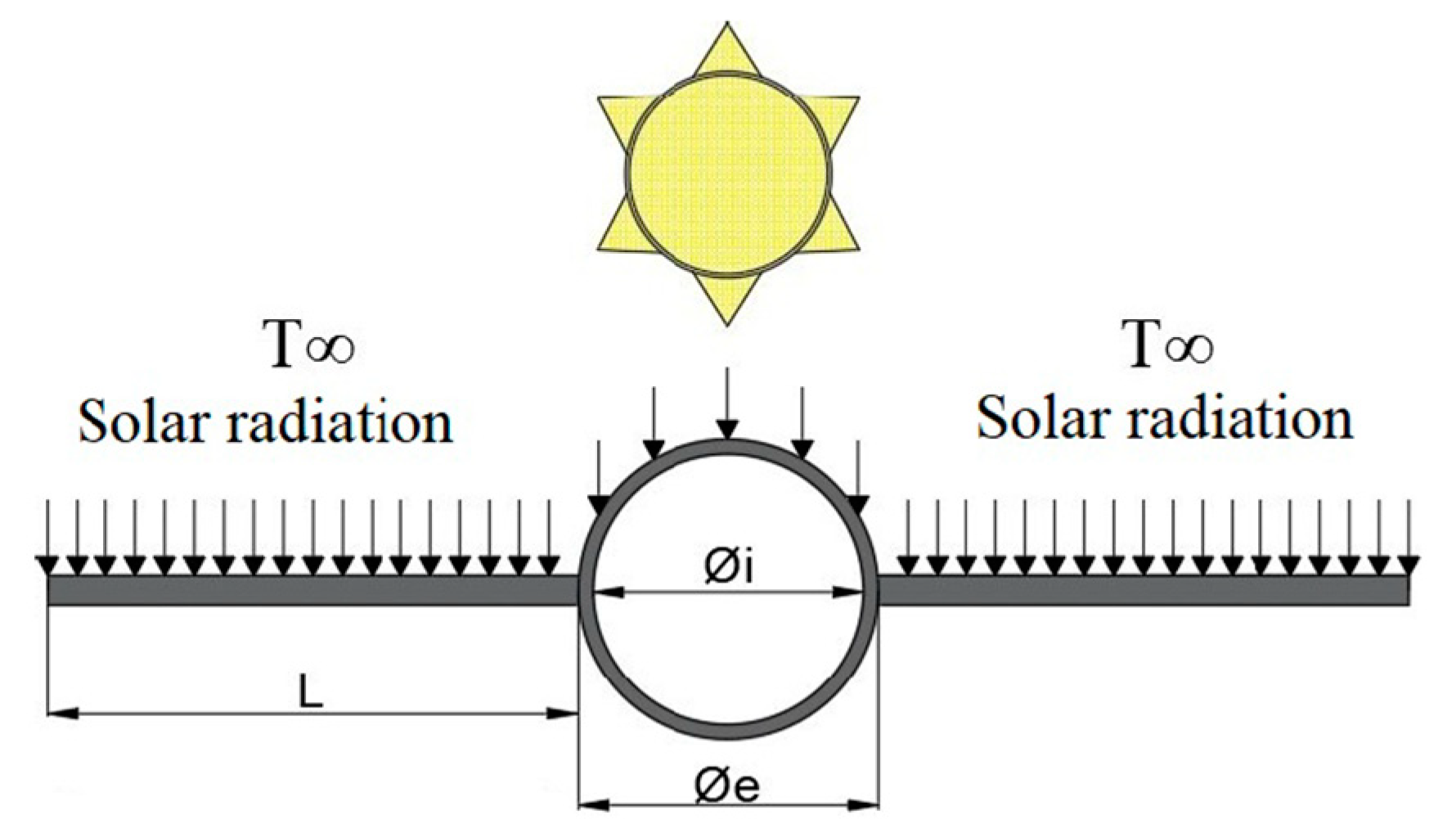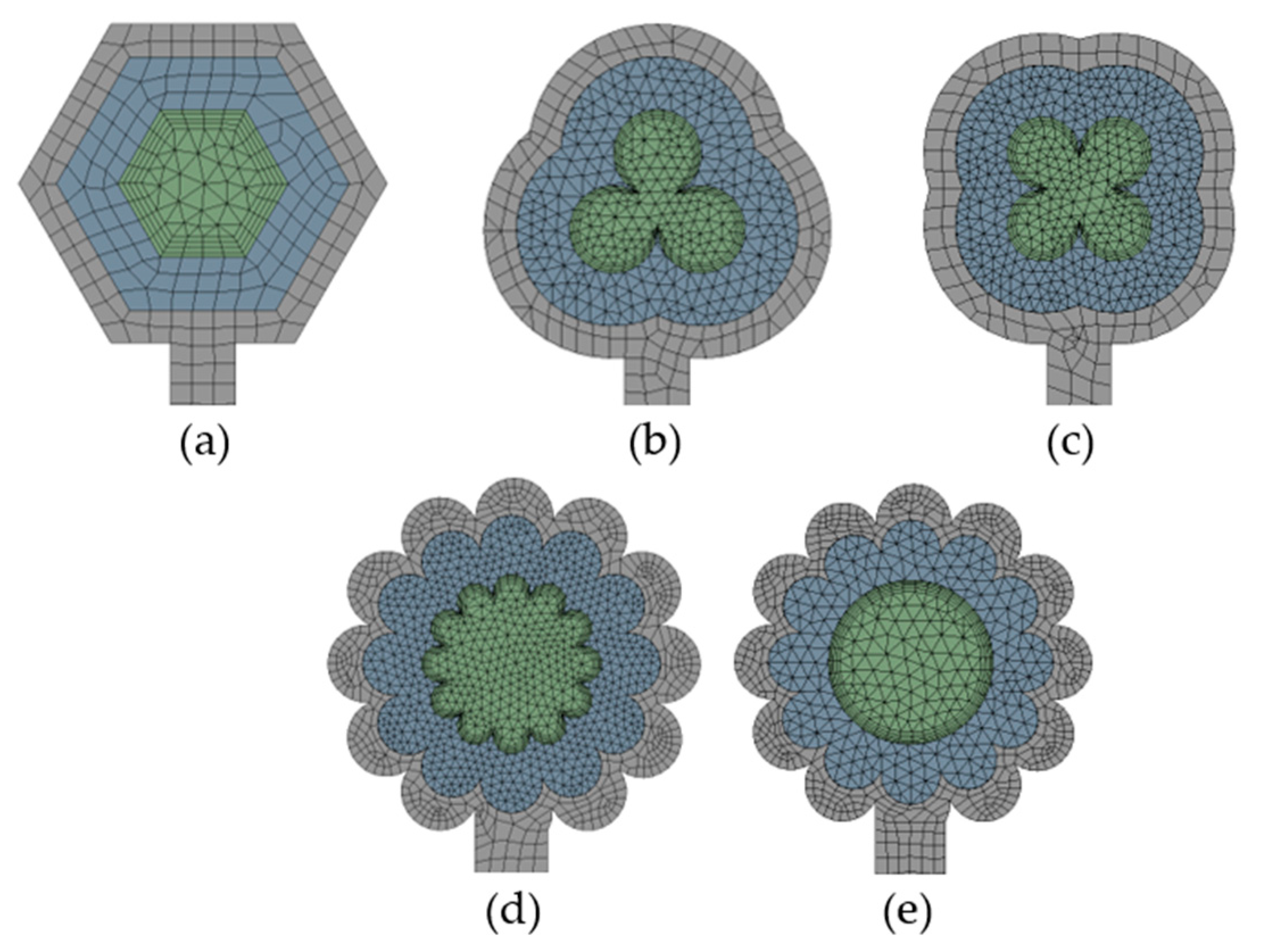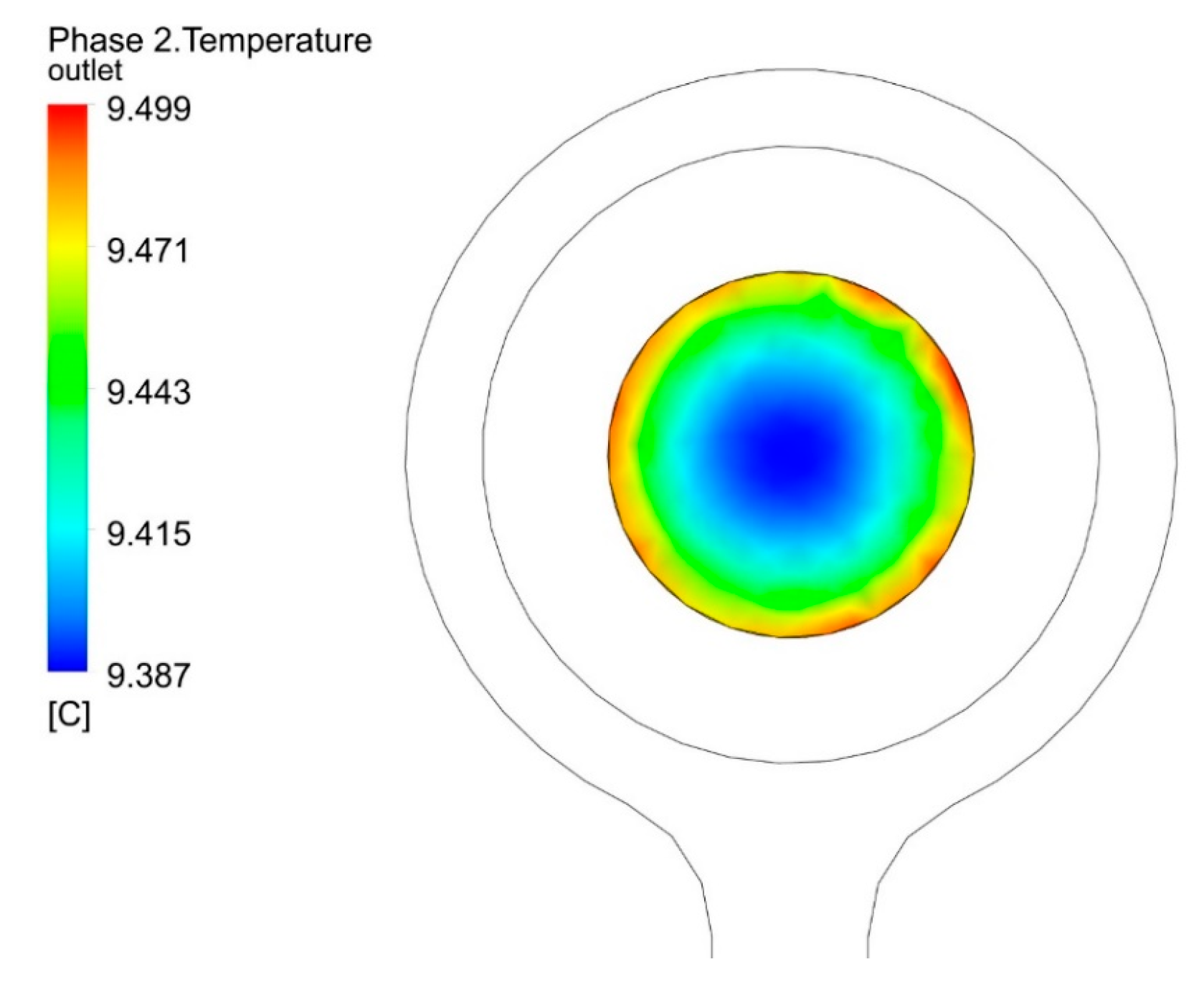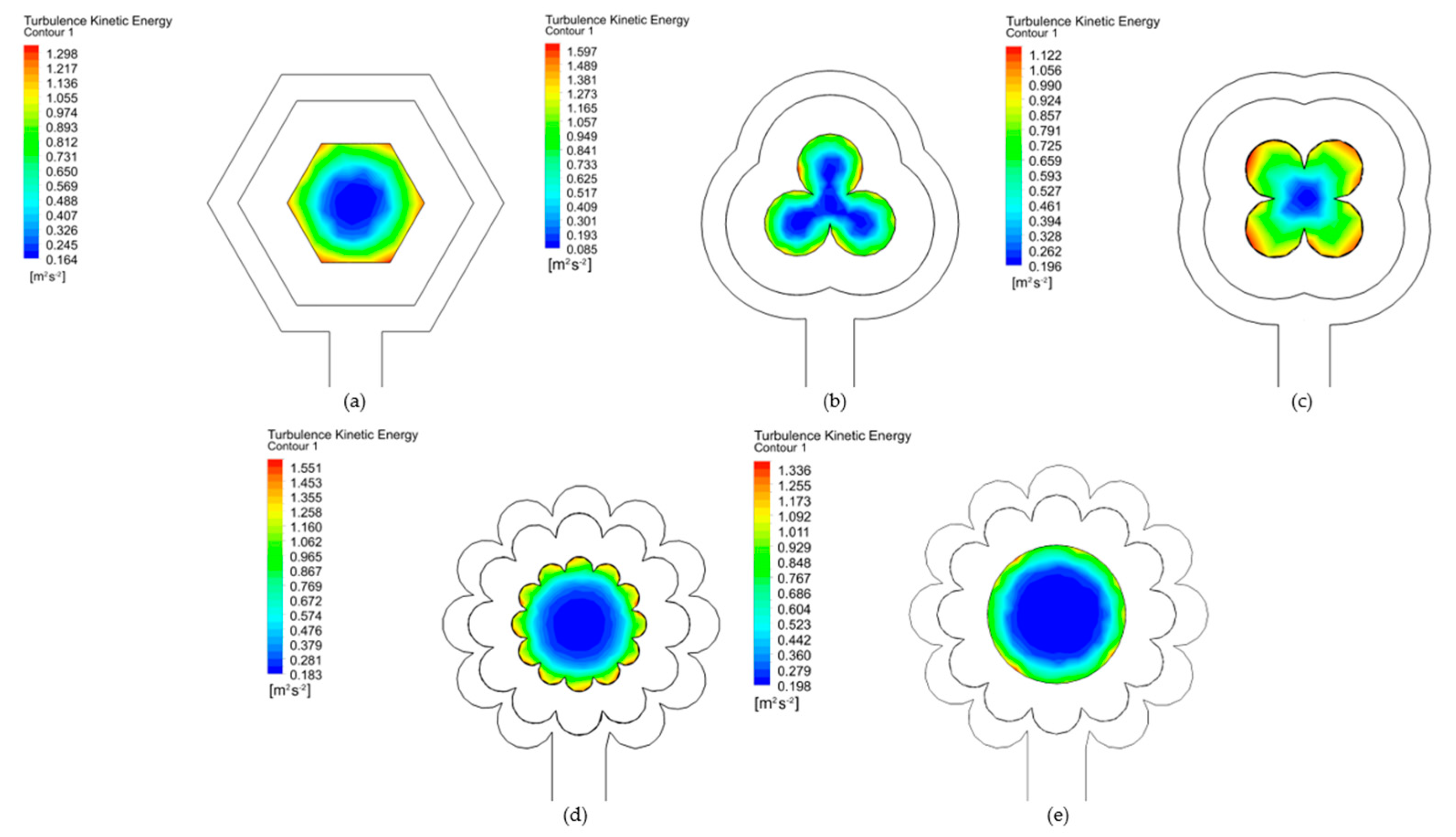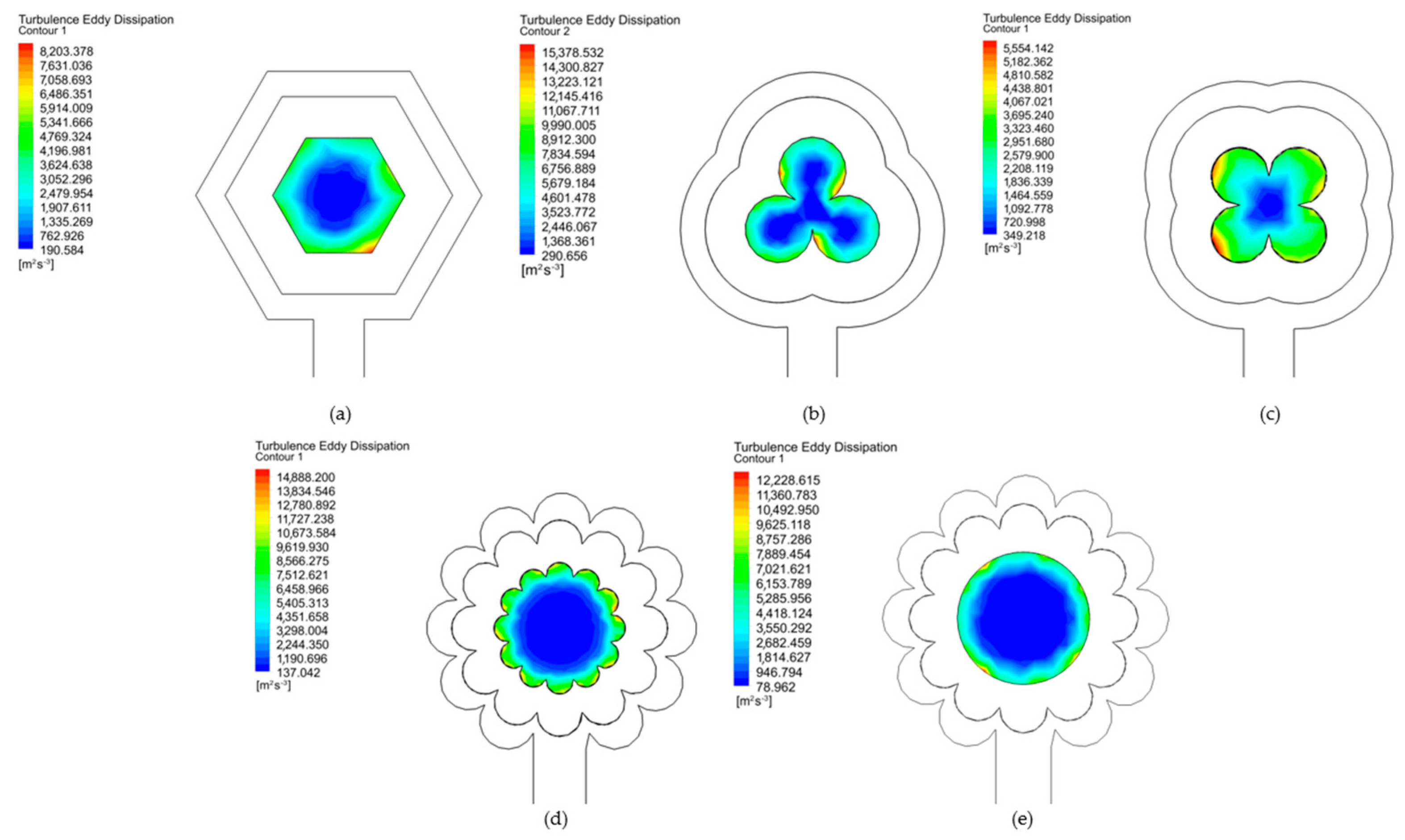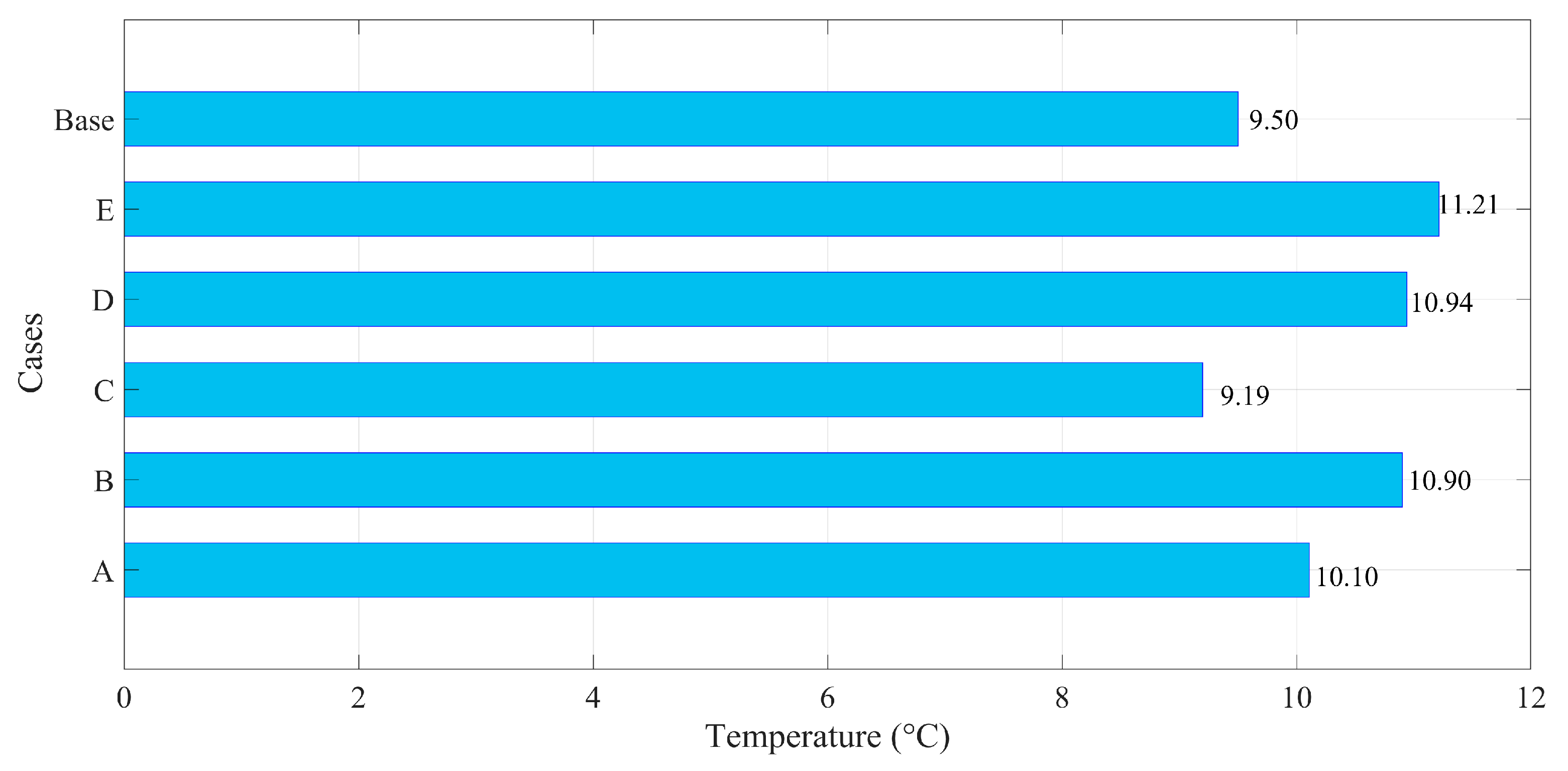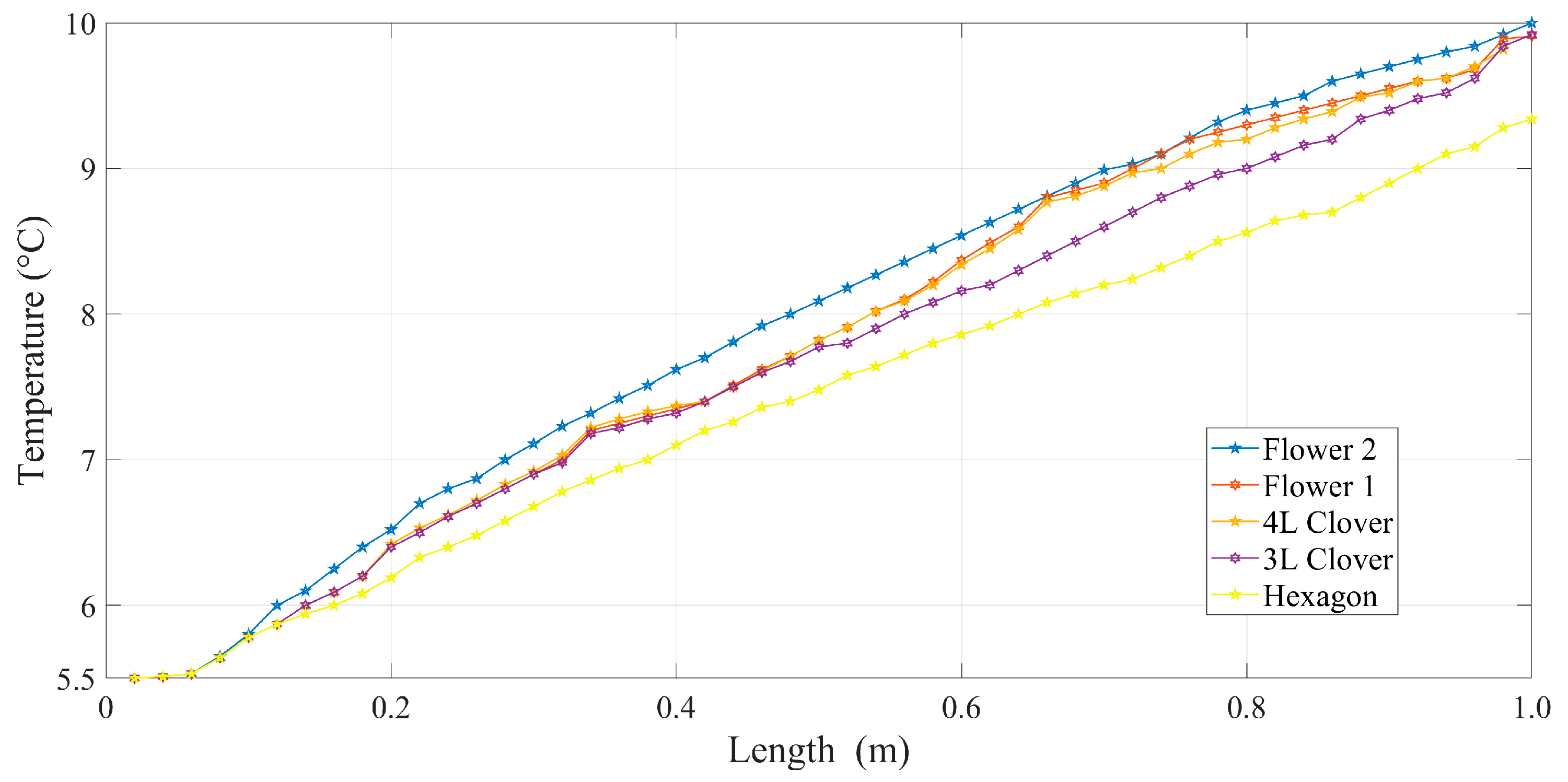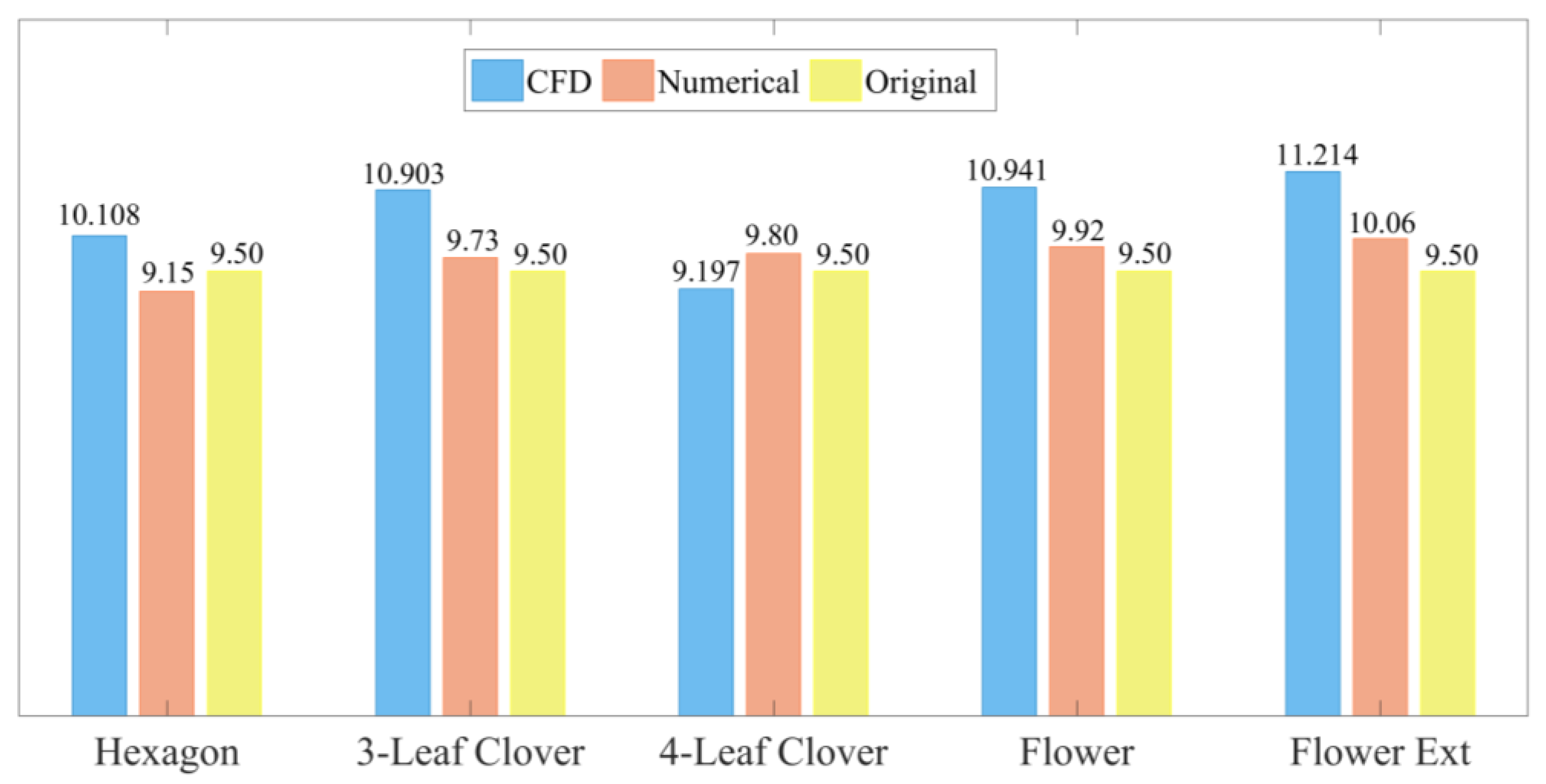1. Introduction
These days, the environmental consequences related to the consumption of energy generated by fossil sources are a wake-up call to the scientific community to improve the performance of systems that work with renewable energy, like solar energy [
1,
2]. Solar power is significant among global renewable energy sources due to its abundant energy potential [
3]. The use of solar energy for several processes is advantageous for reducing the energy consumption of conventional systems and protecting the environment [
4]. The direct-expansion solar-assisted heat pump system is employed for heating different fluids using refrigerants as working fluids since they have a series of environmentally acceptable thermodynamic (evaporating pressure, boiling, critical, and freezing temperature) and physicochemical (low flammability and toxicity) properties [
5].
Direct-expansion solar-assisted heat pumps (DX-SAHP) can be used in different fields with significant energy savings, as stated by Ji et al. [
6], considering the different design and operating factors such as relative humidity, which produces an increase of 16.3% in the coefficient of performance (COP) of the flat plate device without cover when it is raised from 70% to 90%. In recent investigations like the studies by Neelamegam and Amirtham [
7] and Jamali [
8], and in the search for better performances in devices that contribute to solar energy, global solar radiation is an essential parameter for designing solar energy systems. In addition, flat plate solar collectors have led to the integration of new materials after an experimental and numerical validation with CFD simulation software Ansys Fluent (
https://simutechgroup.com/ansys-software/fluids/fluent/, accessed on 1 July 2023), where the data obtained with the simulation with actual data, as proposed by Zhou et al. [
9], achieved an increase of 11.3% in the efficiency of a solar collector; furthermore, Nandanwara [
10] improved the COP of a refrigeration system around 7%.
It is possible to determine different parameters that influence solar-assisted heat pump performance with the aid of numerical models which take into account continuity, momentum, and energy conservation equations to varying values of temperature, pressure, enthalpy, mass flow, and density, among others; despite the presence of some errors smaller than 6%, they show their validity when contrasted with experimental results, achieving a 60.2% reduction in electricity consumption when the temperature of 2.5 L·min
−1 of water is increased from 25 to 32 °C, compared to the same process using electrical resistances [
11].
In addition, to improve the efficiency of flat plate collector/evaporators, as has been done in simulation works such as Sun et al. [
12], different pipe patterns are simulated to find a new configuration that improves the global COP of a DX-SAHP heating system. The lack of research about geometric changes in a collector/evaporator has been evidenced in several peer-reviewed works where new information is required to benefit the thermodynamic field. Therefore, in the study by Andrade et al. [
13] about the efficiency of a flat-plate solar collector when the cross sections are varied, it is indicated that, with a hydraulic diameter of 10 mm, temperatures up to 330 K are reached at the outlet of the device with an efficiency of 68%, a circular section, and a pressure of 108.3 Pa; these results were obtained through a CFD analysis using water as a working fluid. In addition, to evaluate the COP of a DX-SAHP system, a comprehensive thermodynamic evaluation can be performed considering a cascade refrigeration system using hydrocarbon refrigerants [
14,
15].
The research carried out in this study is focused on increasing or improving solar energy usage. It involves managing the heat flow, where CFD software is used to validate the temperatures achieved. As explained by Panchal and Patel [
16], the geometry and mesh of the construction model are realised using software for different applications (solar collectors and drying chambers, among others). The CFD validation exhibits acceptable results in the design and improvement of compact heat exchangers, as can be appreciated in the study by Abeykoon [
17], who demonstrate that this type of validation may be utilised for different design options without requiring the manufacturing of prototypes that employ working fluids with different thermodynamic properties. Considering research works like those by Abeykoon [
17], it is essential to emphasise the improvement of the DX-SAHP system’s performance, which is directly related to the efficiency of its components, such as the collector/evaporator, which has been studied by authors like Combariza et al. [
11] and Sun et al. [
12]. Nevertheless, these works did not investigate the influence of geometric variation in the cross-section of the heat flux in order to improve the efficiency of this device. This research aims to conduct CFD simulations and numerical analysis of various geometric profiles that are different from the traditional circular pipe to obtain results through a comparative figure to show improvement through a more significant outlet temperature than the original model.
2. Materials and Methods
In the current research work, a comparative study about the increase of the heat transfer in a collector/evaporator, which can be appreciated in
Figure 1, is carried out using R600a refrigerant as a working fluid. This study references the experimental results of a base model of the heat exchanger presented by Quitiaquez et al. [
18] to perform a numerical and a CFD analysis in models considering different cross sections with the same area of the base case.
The study included an experimental case presented by Quitiaquez et al. [
18] where the original geometry of the channel in the collector/evaporator is circular with a cross-sectional area of 1.1341 × 10
−5 m
2; for comparison purposes, the area is preserved and different new configurations are implemented. In this way, we adopt a criterion for selecting new geometric profiles according to the Nusselt number (Nu) that such profiles may offer, with Nu being equal to 4.36 for the case of laminar flow for a circular profile, which is more significant compared to 4.002 for a regular polygon (hexagonal) profile. Values found by Kreith et al. [
20] show a trend at first sight that, for regular polygons with straight sides, there is a more extensive loss of heat transfer compared to curvilinear profiles. Therefore, to verify the abovementioned information, profiles with a “hexagonal” shape were chosen to visualise a behaviour pattern as a function of the curves that a profile may show, obtaining as a result, as the profile has more curves, that it has a larger heat transfer. Considering the previous argument, the pair of profiles subsequently chosen were “three-leaf clover” (3L Clover) and “four-leaf clover” (4L Clover), as the tube’s external wings help to disperse the heat to the environment, and an inverse one may improve the heat transfer; therefore, the last pair of profiles chosen were “flower” and “internal circular section with flower in the external profile” (flower in the external profile).
2.1. Experimental Parameters
To analyse the proposed models and obtain their results from the initial case, it is necessary to consider the conditions under which the base model was developed, as shown in
Table 1, to use them as parameters in the proposed CFD analyses and realise a validation. In the research carried out by Quitiaquez et al. [
19], the total set of specifications of the base model for the simulation was detailed; additionally, a network diagram of thermal resistances was made in which the influence of the heat transfer mechanisms present in the analysis of the collector/evaporator are explained.
On the other hand,
Table 2 shows the thermophysical properties of refrigerant R600a at saturation temperature and boundary conditions.
2.2. Governing Equations in the Numerical Analysis
To obtain the numerical analysis results for the proposed models, it is necessary to consider the parameters in
Table 1 in the equations that govern the behaviour of the fluids in the heat exchange devices to determine the specific properties that influence the analysis results. The hydraulic diameter (D
h) changes due to the chosen configurations; according to Equation (1), this is a function of the cross-sectional area, which is constant in all profiles, while the perimeter varies depending on the geometric shape [
19].
The Reynolds number (Re), Equation (2), relates the physical properties of the fluid, its velocity, and the geometry of the pipeline through which it flows (enabling us to determine the laminar or turbulent flow) to the fluid velocity (V), the hydraulic diameter of the pipeline (Dh), and kinematic viscosity (v) [
21].
when Re is in the interval between 2300 and 10,000, it is known that the flow is in a state of transition from laminar to turbulent flow. At the same time, the Nusselt number (Nu) becomes essential for the heat flow amount that the fluid transports. It is evaluated as a transition regime, a ratio between laminar and turbulent flow. Considering this regime, the Nusselt number is calculated using Equation (3).
therefore, Equation (4) considers the boundary condition for laminar flow at a constant temperature [
22].
Correlations for turbulent regimes are detailed in Equations (5) and (6) [
23].
similarly, the correction of Equation (7) determines the temperature for any length of the pipeline, considering that the value of the surface area is a function of the length and that this equation shows an error smaller than 1%. At this point, it is highlighted that the value of the number of transfer units (NTU) is smaller than 5, and the temperature at the outlet is not close to the surface temperature (Ts).
2.3. CFD Analysis
When performing the computational fluid dynamics analysis, the finite volume method is considered to solve equations that relate to the conservation of mass, momentum, and energy [
24]. For the present case study, ANSYS 2021 software with the (Fluent) module was used to consider specific parameters in the development of the fluid passing through the collector/evaporator with the Eulerian model, determining results such as temperature along the heat exchanger, pressure variation, and heat flow, among others.
2.3.1. Mesh
Due to the variety of models proposed, it was required to perform an independent mesh in each case to validate the modelling. However, since the heat flows in the solid–fluid interface were calculated by integration, all proposed models required a refined mesh in this area [
25]. As can be observed in
Figure 2, a non-structured mesh was used in the CFD analysis, preserving a mesh quality smaller than 0.25 in skewness and generating an independent distribution of elements to improve the mesh according to the geometry with the mesh tool of the simulation software [
26]. In addition, the mesh used was of adequate quality. After performing a test with refinement in the boundary layer, there was no significant change in the overall results or in that area, despite a considerable increase in the mesh elements. Specific coefficients considered in the turbulence model are set by default in the simulator, and their applicability in the simulation was checked in the validation process.
In meshing the proposed model and all those presented in this research, a remarkable refinement was made in the section changes that were present. In this way, the details were incorporated, and a correct CFD analysis of the heat transfer at the solid–fluid interface was generated, and, consequently, adequate temperature changes were achieved. In the validation process of the models used, where experimental parameters were used for a collector/evaporator, which is part of a DX-SAHP system, there was a percentage error margin of less than 15% between the experimental output temperature and the one obtained by CFD analysis. In order to evaluate whether the mesh used presented the appropriate characteristics for CFD analysis, the average values of the mesh metrics were considered, as presented in
Table 3, meshing with a minimum orthogonal quality >0.1 [
27]. Moreover, for solar collectors, the convergence of the meshing to the outlet temperature can be achieved considering a Skewness quality lower than 0.25 [
19]; for this reason, the criterion was considered for meshing the models.
2.3.2. Governing Equations
The CFD analysis to determine the behaviour of the fluids uses a series of Navier–Stokes equations, which are simultaneously solved to satisfy the conservation of mass (continuity), momentum, and energy in case there is heat transfer, as shown in Equations (8), (9), and (10), respectively [
9].
Another essential factor in the CFD analysis is the flow regime of the refrigerant, and this is the reason why, in this investigation, the
k-Ɛ RNG turbulence model was used, governed by Equations (11) and (12), which shows results with great precision, outstanding reliability, and possibly a more negligible computational cost [
28].
For the case of models that require a phase change in a fluid, the program solves a group of equations to achieve convergence in the simulation result with the Eulerian Model, among which there are: the continuity, energy, and momentum equations, corresponding to Equations (13), (14), and (15), respectively [
29].
Additionally, as part of the numerical consideration for the analysis, the pressure–velocity coupling scheme and the discretization for pressure, momentum, and energy, among others, are highlighted (
Table 4).
4. Discussion
An increase associated with a more extensive surface section in the duct coating is observed when considering the outlet temperature of the analysed models. This, in each case, is verified due to the cross-sectional shape of each geometrical shape and the increase in area associated with the curvatures that were implemented. A cross-section analysis to measure snow depth, density, and snow water equivalent was applied by Kaasik et al. [
33]; the cross-section area varied from 11 to 100 cm
2, and the length of the pipe from 30 to 100 cm. As in the present research, the thinner samplers underestimate the snow water equivalent. When considering this research, better results are obtained when usingdifferent equipment with a variation in the cross section. On the other hand, in the research of Andrade et al. [
13], the efficiency of the flat-plate solar collector is evaluated, as well as the behaviour of the fluid inside the pipe; three different cross sections were considered with hydraulic diameters of 10, 5.12, and 6.16 mm, using ANSYS Fluent. The circular geometry presented a better performance and improved the heat transfer from the environment to the fluid. This research was considered to be a basis for further study of cross-sectional area change. Likewise, Rukruang et al. [
34] analyzed the thermal performance of tubes with alternating cross sections, indicating that tubes with alternating cross sections have improved vorticity, improving the tube’s thermal performance. In addition, Mimi-Elsaid et al. [
35] indicate that using a circular cross section of a helical tube has a higher heat transfer-per-unit pumping power that is higher than that of the elliptical cross section of a helical tube and the square cross section of a helical tube by approximately 23.08% and 84.61%, respectively. These parameters are also evidenced in the present research.
